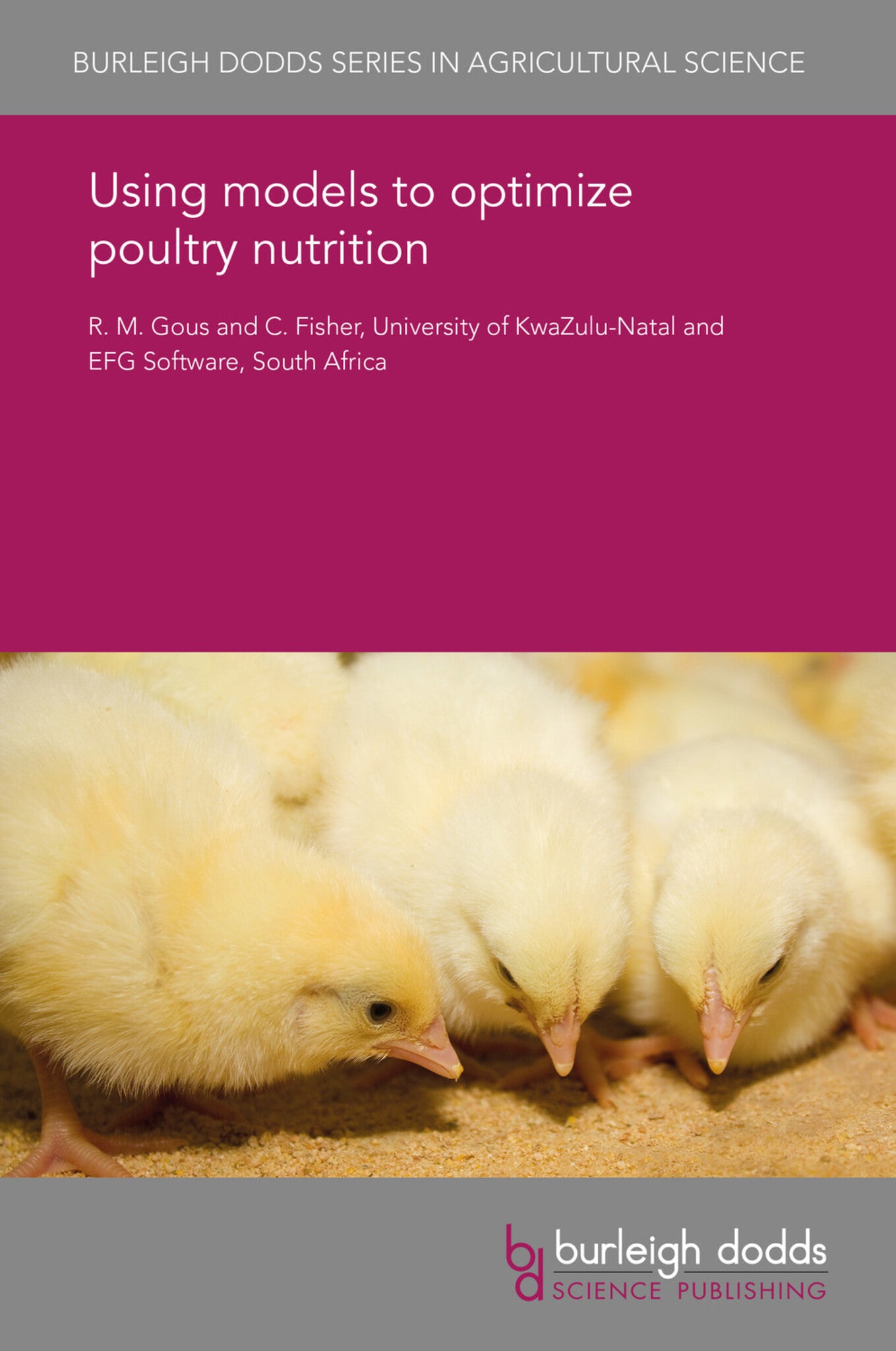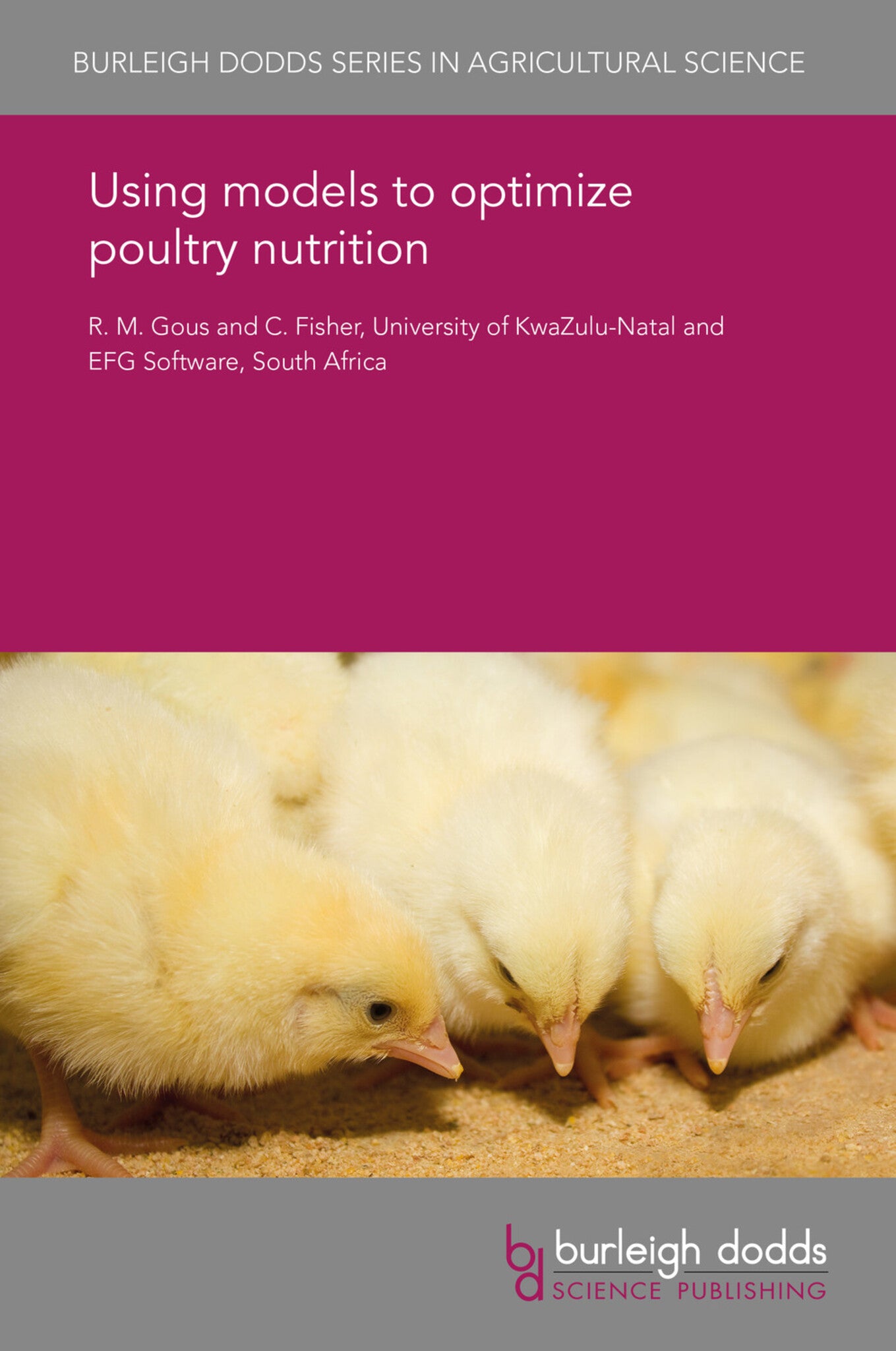We're sorry. An error has occurred
Please cancel or retry.
Using models to optimize poultry nutrition

Some error occured while loading the Quick View. Please close the Quick View and try reloading the page.
Couldn't load pickup availability
- Format:
-
31 July 2016


TECHNOLOGY & ENGINEERING / Agriculture / General, Agricultural science, TECHNOLOGY & ENGINEERING / Agriculture / Animal Husbandry, TECHNOLOGY & ENGINEERING / Agriculture / Sustainable Agriculture, Sustainable agriculture, Organic farming, Poultry farming

1 Introduction
2 Predicting responses of poultry to nutrients
3 Predicting food intake
4 Predicting potential laying performance
5 Modelling environmental factors affecting desired feed intake
6 Using models to optimize feeding programmes
7 Summary
8 Where to look for further information
9 References



